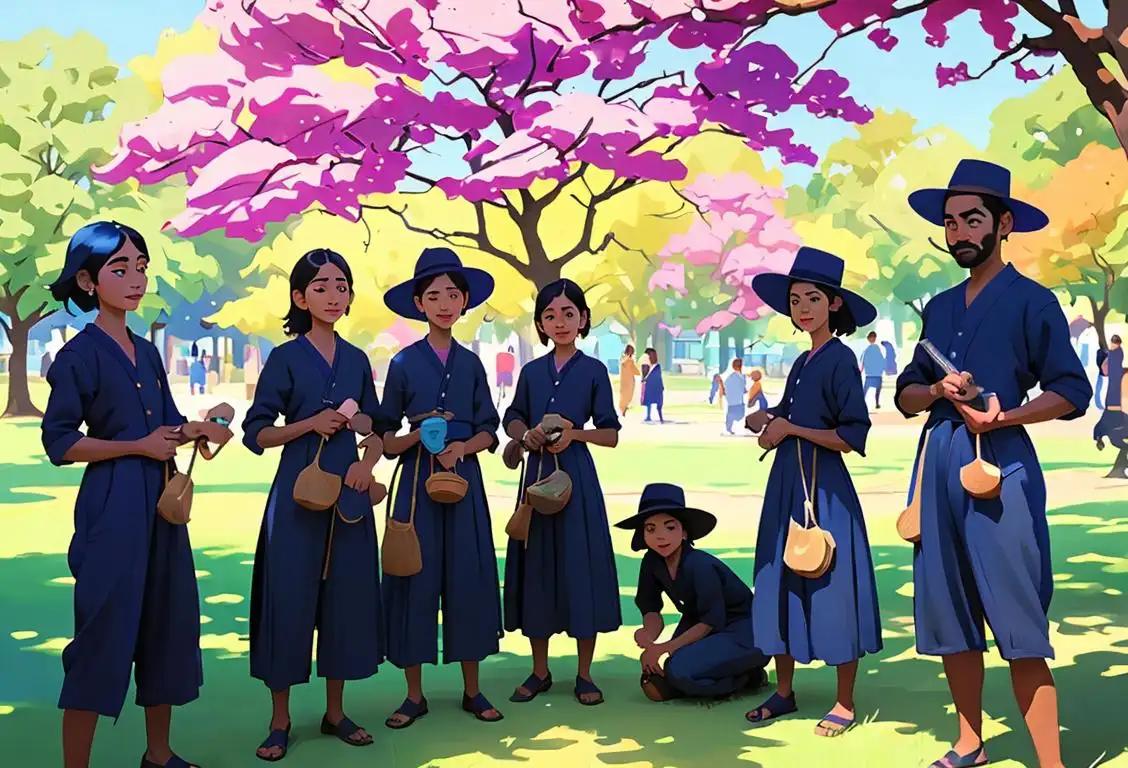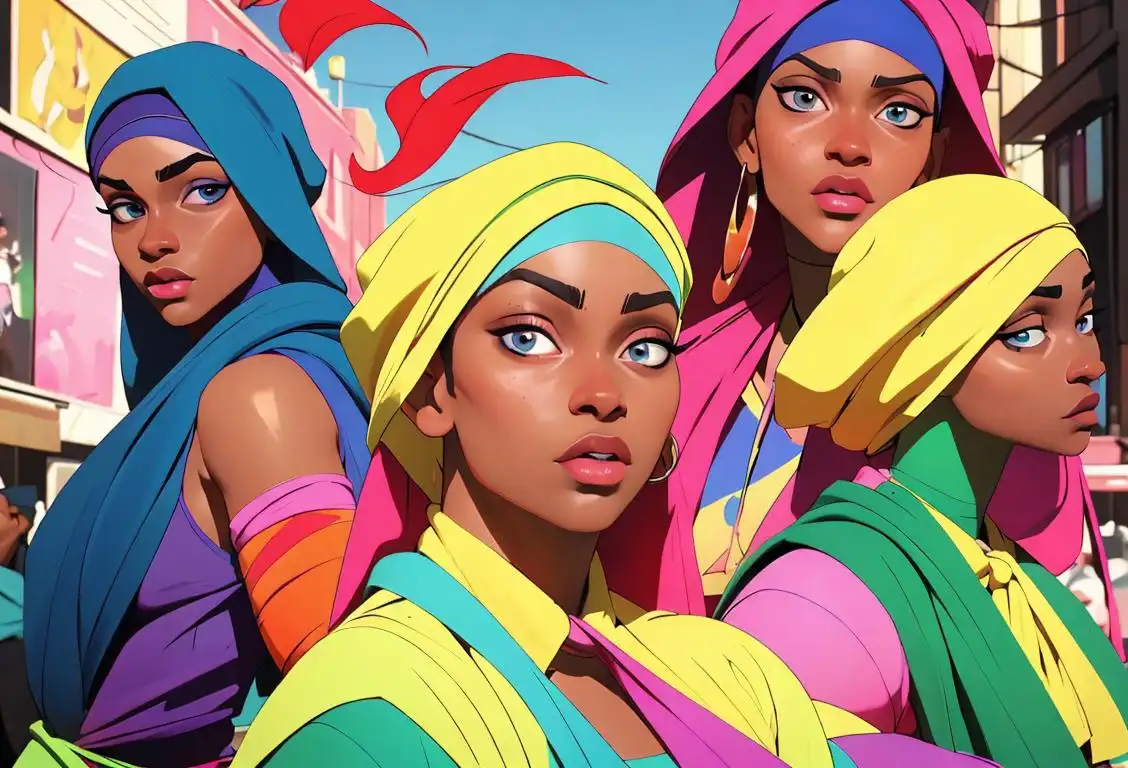National Indigo Day

Welcome to the indigo extravaganza! Today, we are diving into the vibrant and mysterious world of National Indigo Day. So grab your blue paint, put on your best pair of indigo-dyed jeans, and let's embark on a colorful journey!
When is Indigo Day?
It's national indigo day on the 7th March.
A Brief History of Indigo
Indigo, ah, such a splendid shade of blue! But where did this enchanting color come from? Well, let's rewind the historical clock back to ancient times. Indigo dye is extracted from the leaves of the indigofera tinctoria plant, a lovely little shrub that grows mainly in tropical regions. The process of dyeing with indigo dates back almost 4,000 years to the mighty civilizations of Ancient Egypt, Mesopotamia, and the Indus Valley. These ancient cultures cherished indigo for its rich, deep hue and used it to dye textiles, paint murals, and even apply it to their bodies as a form of artistic expression.
As indigo spread to different corners of the world, it became a symbol of wealth, luxury, and status. In Europe, during the Renaissance period, indigo was highly sought after as a colorant for textiles. Fun fact: Queen Elizabeth I of England was known for adorning herself in sumptuous indigo garments, making her the official queen of cool!
History behind the term 'Indigo'
3000 BC
Early Origins
The fascinating history of the term 'indigo' can be traced back to around 3000 BC during the ancient times. Indigo dye, derived from the plant Indigofera tinctoria, was already being used by civilizations in the Indus Valley and Egypt. The word 'indigo' itself comes from the Greek word 'Indikon', meaning 'Indian dye'. It was highly sought after for its vibrant blue color and became a symbol of prestige and luxury.
400 AD
Spread to Europe
During the Roman Empire, the use of indigo spread to Europe. The dye became popular among the elites and was used for coloring fabrics, especially silk. It was prized for its resistance to fading and its ability to create a deep, rich blue shade. The term 'indigo' began to be referenced in various written records, solidifying its place in European culture.
1492
Discovery of the Americas
With the discovery of the Americas by Christopher Columbus, a whole new world of plants and dyes was unveiled. Indigo plants were found in abundance in tropical regions, particularly in the Caribbean and South America. This discovery led to an increase in the availability of indigo dye and expanded the trade routes for this precious commodity.
17th Century
Indigo Plantations and Slavery
The 17th century marked a significant period for indigo production. European nations, such as France, Spain, and England, established indigo plantations in their American colonies. The demand for indigo dye was so high that it led to the establishment of large-scale indigo plantations, particularly in the Caribbean and southern United States. Unfortunately, these plantations relied heavily on slave labor, contributing to a dark chapter in indigo's history.
19th Century
Synthetic Indigo Development
In the 19th century, chemists began experimenting with synthesizing indigo dye. The breakthrough came in 1878 when German chemist Adolf von Baeyer successfully synthesized indigo using coal tar derivatives. This discovery revolutionized the industry by providing an alternative to natural indigo dyes, making it more affordable and accessible to a wider range of people.
20th Century
Decline and Resurgence
As synthetic dyes gained popularity, the demand for natural indigo declined. By the mid-20th century, the production of natural indigo had significantly decreased. However, in recent years, there has been a resurgence in the use of natural dyes due to a growing interest in sustainable and eco-friendly practices. Artisans and designers have rediscovered the beauty and unique qualities of natural indigo, leading to its revival in the fashion and textile industries.
Did you know?
Did you know that indigo is often associated with spirituality and inner wisdom? It is believed to have calming effects on the mind and is used in various meditation practices.Tagged
fun history fashionFirst identified
7th March 2017Most mentioned on
7th March 2017Total mentions
5Other days
Du Rag Day
Leather Collection Is Open Day
Crown Day
Indigo Day
Boots Day
Bonnet Day
Toga Day
Hat Day
Liberation Day
Teacher Appreciation Day








